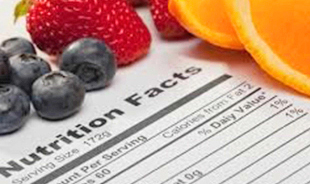Determining nutritional value of products

Determining nutritional value of products
According to EU Regulation no. 1169/2011 on informing consumers about food, it is mandatory to include the nutrition label. By including a nutrition label on the product, consumers are given a much better access to information on the energy value and nutritional value of the food. Also, by including the nutritional label, the consumer is kept informed and therefore able to choose, and use the food in a safe way.
Generally on nutritional value
The nutritional value tells us how many nutrients are in 100 g or 100 ml of product. Also, the nutritional value can be expressed per unit of food serving. Information on nutritional values that make up the basic content of the nutrition label include information on the energy value of the food, and on the amount of proteins, carbohydrates (with separate information on sugars), fats (with separate information on saturated fatty acids) and salts. Additional information on the nutritional values that can be found on the nutrition label are amounts of monounsaturated and polyunsaturated fatty acids, starch, polyols, fiber, vitamins and minerals. These data usually come in a form of a table. If the nutrition label contains information on vitamins or minerals, then the percentage of the recommended intake referred to in point 1 of Part A of Annex XIII to Regulation 1169/2011 per 100 g or 100 ml must also be indicated.
Energy value is expressed in kcal and kJ. The recommended energy intake depends on several factors like age, gender, weight, physical activity... For example, the average recommended daily energy intake for a child aged 1 to 3 is 1,200 calories, while the average grown-up person consumes about 2,000 calories a day.
Fats are an important source of energy as well as fatty acids in our body. Saturated fatty acids are most often found in fats of animal origin and they should be present in as small a proportion as possible (trans-fatty acids). Unsaturated fatty acids are most often found in oils of plant origin as well as in fish and have a positive effect on the cardiovascular system (omega-fatty acids).
Carbohydrates are the main source of energy in our body. When inspecting a nutrition label, one should pay attention on the amount of simple sugars. It is preferable that their amount be as small as possible.
Proteins are the main building material of our body. They themselves are made up of different combinations of 20 amino acids, of which 8 are essential, which means that our body cannot synthesize them, but they must be ingested with food. Essential amino acids are valine, leucine, isoleucine, lysine, methionine, phenylalanine, threonine and tryptophan. Foods of animal origin contain all the essential amino acids, and such proteins are called complete proteins or high-quality proteins. On the other hand, foods of plant origin generally do not contain all the essential amino acids, so we call such proteins incomplete proteins.
Salt or sodium chloride is another factor that greatly affects health. The maximum allowed daily salt intake is 5 g or one teaspoon.
Labosan d.o.o. is able to offer you all the help needed for the preparation of a nutrition label based on laboratory analyses for basic nutrients as well as additional tests to include all the information needed.
The basic content of the nutrition label includes the following tests:
- energy value (kJ / kcal)
- fats / of which saturated fatty acids
- carbohydrates / of which sugars
- proteins
- salt
Additional testing of food ingredients include:
- monounsaturated and polyunsaturated fatty acids
- starch
- fibers
- vitamins and minerals